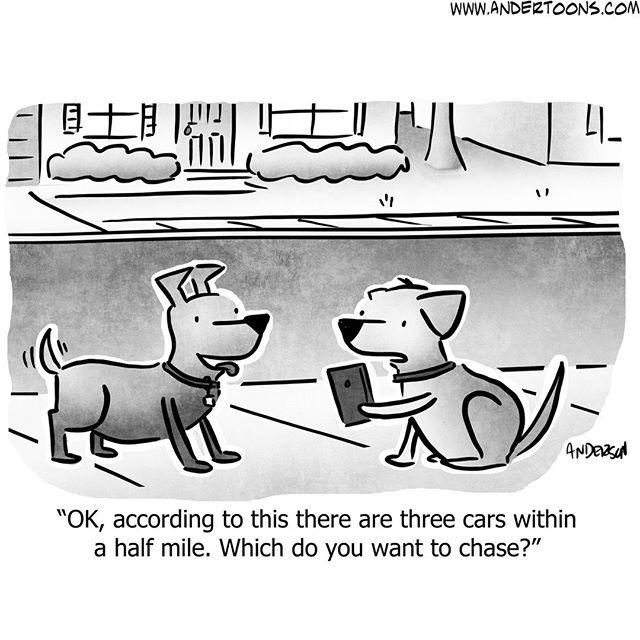
One of the most crucial skills a marketing professional can master is segmentation — dividing a potential audience into groups and pinpointing with whom the marketing message is most likely to resonate. In fact, in today's fast-paced world, segmentation proves to be more vital than ever.
Buyers make split-second purchasing decisions, especially when they're shopping online. Segmentation helps the right message reach the right person with plenty of time to spare.
As you continue to hone your marketing skills, make sure segmentation is at the top of the to-do pile.
Here are some of the basics to help you connect to your audience and drive sales as you envision.
The Four Types of Segmentation
There are multiple ways to segment your customers. However, these are four of the most common ways to do it:
1. Geographic Segmentation
Where does a customer live? What products will suit that region's climate, weather, terrain, etc.? How does one market's culture differ from another? How can you use that information to your advantage? These are just some of the questions geographic segmentation can answer.
2. Journey Segmentation
Some segmentation comes down to a customer's journey with your brand or product. You likely have repeat or regular customers. Then, there will be a group who stops by every few months, every year. Some clients will fall off after a year or so, losing touch with your brand.
You can use this knowledge to target email campaigns or discounts. This can be a compelling method for you as a marketer, enticing people to return to your primary customer base through recommendations or reductions.
3. Demographic Segmentation
There are plenty of demographic markers that can help you divide your audience. A person's age, gender, marital status, education level, income, and generation can help you target your efforts and pinpoint who might be most open to your message.
Many companies gather this type of information by asking their customers to fill out a survey. Once you have the stats, put them into profiles for each person and use the data to target specific people with launches, products, offers and more.
4. Behavioral Segmentation
Finally, you might be able to divide customers by the way they shop or otherwise interact with your brand. Typically, you can divide behaviors into categories like:
- Frequency of purchases
- The occasion for purchases, such as Christmas or a new baby
- The thought process behind purchases — why did they buy this?
Of course, you can choose to segment your customer base by any criteria not listed above. However, these are four of the most common ways to do it — and with so many marketers adhering to these categories, they must be useful.

Technology That's Improving Segmentation
To make segmentation simpler, you can rely on plenty of different technological advances made with this task in mind. Fortunately, there are a variety of tools to use.
- With audience segmentation being so crucial for your brand, you need a tool that helps group your most important constituencies together into addressable audiences based on behavioral and demographic data. HubSpot is a favorite tool for many because of its power to manage segmentation. HubSpot offers a system to create personas, build segmented smart lists based on the criteria you choose, create workflows with enrollment triggers. With segmentation, you can offer website content, emails, and calls-to-action based on the interest of the customer/prospect.
- MailChimp allows you to reach out to specific segments of your audience with different messages through email, Instagram, Facebook and more. You can also see customers who have left behind a cart full of goodies on your website and reach back out through MailChimp, which is behavioral segmentation.
- Facebook's Custom Audience Tool makes social media advertising as viable a tool as email marketing. It used to be that emailing customers was the easiest way to segment them into groups and personalize their message. Custom Audience allows you to upload the same groups to the social media site and target users who fall into each category.
- Umbel, allows you to get to know your target audience, as well as people who might not be on your radar but fit the profile. It uses demographic information provided by customers to segment them and turn good fits into actual buyers.
These are just four examples, but shows just how much simpler segmenting has become. All this is thanks to the internet and, of course, all the tech and apps that come with it.
How Segmentation Has Worked for Others
If you're still on the fence about the virtues of segmenting, consider these case studies, which have shown the value of the process.
- NIVEA relied on demographic segmentation to divide customers and monitor their buying behaviors. Then, it created products in accordance with their preferences. For instance, men preferred sunscreen and other sun-related products that were convenient, while women preferred a more luxurious feel. Time spent in the sun also affected the type of sunscreen a customer wanted. This information played right into NIVEA's hands, as far as product development goes.
- McDonald's has used geographic segmentation for years, creating menus that reflect the local flavors in countries around the world. On top of that, it targets commercials to different age groups. While McDonald's breakfast ads are meant to entice working adults, kids will want to head to the burger joint for the latest Happy Meal toy.
It's important to remember that, from one company to the next, no segmentation criteria will ever be the same. However, customization is what it's all about — and, as a marketing professional, you're sure to know who to target to drive sales. So, start pinpointing your customer types by behavior, location or demographic. Then, reach out to them — and keep them coming back.
About the Author
 Kayla Matthews is a researcher, writer and blogger covering topics related to technology, smart gadgets, the future of work and personal productivity. She is the owner and editor of ProductivityTheory.com and ProductivityBytes.com. Previously, Kayla was a senior writer at MakeUseOf and contributing freelancer to Digital Trends. Kayla's work on smart homes and consumer tech has also been featured on Houzz, Dwell, Inman and Curbed. Additionally, her work has appeared on Quartz, PRNewswire, The Week, The Next Web, Lifehacker, Mashable, The Daily Dot, WIRED and others.
Kayla Matthews is a researcher, writer and blogger covering topics related to technology, smart gadgets, the future of work and personal productivity. She is the owner and editor of ProductivityTheory.com and ProductivityBytes.com. Previously, Kayla was a senior writer at MakeUseOf and contributing freelancer to Digital Trends. Kayla's work on smart homes and consumer tech has also been featured on Houzz, Dwell, Inman and Curbed. Additionally, her work has appeared on Quartz, PRNewswire, The Week, The Next Web, Lifehacker, Mashable, The Daily Dot, WIRED and others.